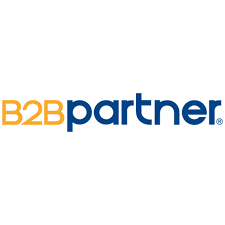
Discover how organizations are accelerating revenue and expanding reach by connecting partners, products, and programs in a purpose-built ecosystem: partnership marketplace https://www.partner2b.com/partner-marketplace is an example of a modern approach to orchestrating partner success and marketplace dynamics.
A partnership marketplace is more than a directory of companies — it is a dynamic platform that helps businesses discover, engage, transact with, and measure partners across referral, reseller, technology integration, and co-marketing models. In today’s digital economy, enterprises of all sizes use partnership marketplaces to scale distribution, accelerate product adoption, and unlock new channels without the fixed costs of building a traditional partner program from scratch.
At its core, a partnership marketplace aligns incentives. Vendors get access to a curated network of sellers, integrators, and influencers; partners gain visibility and the tools to transact; and customers discover validated solutions that meet their needs. This triangular value proposition — creator, channel, and consumer — is optimized by platform features such as partner onboarding flows, joint offers, lead distribution, deal registration, revenue sharing mechanics, and analytics.
Technology is the enabler. A modern partnership marketplace combines partner relationship management (PRM) functions with e-commerce capabilities and API-driven integrations. Automated onboarding lowers time-to-first-deal, while embedded commerce enables partners to purchase or configure solutions directly. Integration with CRM and billing systems ensures that deals are tracked, credited, and reconciled accurately, which is essential for trust and long-term collaboration.
Successful marketplaces emphasize discovery and matchmaking. Searchability, clear partner profiles, verified case studies, and solution categories help buyers navigate an often crowded landscape. Machine learning and recommendation engines can surface the best-fit partners based on company size, industry, tech stack, or geography, improving conversion rates and partner satisfaction.
Governance and clear rules of engagement are equally important. A partnership marketplace must define partner tiers, eligibility criteria, performance metrics, and dispute resolution processes. Transparent incentive models — whether they are margin-based, commission-based, or outcome-based — remove ambiguity and motivate partners to prioritize the marketplace offerings. Compliance and data privacy safeguards help protect customer information across partner interactions.
Operationalizing a partnership marketplace requires attention to onboarding and enablement. Partners should have access to self-service resources: playbooks, sales kits, technical documentation, training modules, and co-branded marketing templates. Certification programs and performance badges reward competence and increase buyer confidence. Regular enablement sessions and partner success touchpoints keep engagement high and surface opportunities for improvement.

Measurement and analytics turn activity into insight. Key performance indicators for a partnership marketplace include partner activation rate, time-to-first-deal, average deal size, pipeline contribution, revenue per partner, and churn. Dashboards that segment results by partner type, region, or vertical allow marketplace operators to optimize incentives, remove friction, and invest in high-potential relationships. Attribution models that clearly tie leads and revenue to partner activities are critical for fair compensation and long-term trust.
Designing a compelling partner experience also involves simplifying transactions. Embedded purchasing, flexible pricing, and digital contract workflows reduce friction in closing deals. For technical integrations, providing sandbox environments, pre-built connectors, and a clear API strategy accelerates time-to-value for both partners and end customers. Automation of routine tasks — deal routing, commission calculations, tax handling — frees partner managers to focus on strategy and high-value collaboration.
Strategic curation elevates the marketplace. Quality control through vetting, customer reviews, and featured partner programs helps maintain a high standard of offerings. Co-marketing campaigns and marketplace-led demand generation bring buyers into the ecosystem, while partner success stories and sector-specific solution bundles demonstrate real-world impact. Marketplaces that evolve into ecosystems — where partners collaborate with one another as well as with the platform owner — create compounding network effects that benefit all participants.
Business models for partnership marketplaces vary. Some platforms operate on subscription or listing fees, others take a transaction percentage, and many combine multiple revenue streams including lead fees, certification charges, and premium placement. The most sustainable approach balances monetization with partner value — charging in a way that scales with success rather than penalizing early-stage partners.
Challenges are inevitable. Onboarding complexity, channel conflict, inconsistent partner performance, and measurement gaps can undermine momentum. Marketplaces overcome these hurdles by investing in clear policies, modern tooling, partner enablement, and a culture that prizes collaboration over control. Frequent feedback loops with partners and customers keep the platform responsive to changing needs.
Emerging trends will shape the next generation of partnership marketplaces. Greater automation and AI-driven matchmaking will reduce manual effort and improve fit; blockchain has the potential to streamline contract execution and commission tracking; and cross-platform interoperability will let marketplaces plug into broader ecosystems for payments, identity, and data enrichment. Sustainability and social impact are also becoming decision factors for partners and buyers alike, prompting marketplaces to surface ESG credentials and mission-aligned partnerships.
For organizations considering whether to launch or join a partnership marketplace, the strategic question is simple: do you want to scale through networks or rely solely on owned channels? Marketplaces unlock speed and reach but require investment in architecture, governance, and partner success. When executed well, they transform static partner programs into living ecosystems that drive consistent, measurable growth.
In conclusion, a partnership marketplace is a strategic tool for growth, distribution, and innovation. By combining technology, governance, incentives, and enablement, marketplaces reduce friction, increase transparency, and amplify partner impact. Companies that treat their marketplace as both a platform and a community — where partners are supported, rewarded, and showcased — will capture disproportionate benefits in an increasingly interconnected economy.
